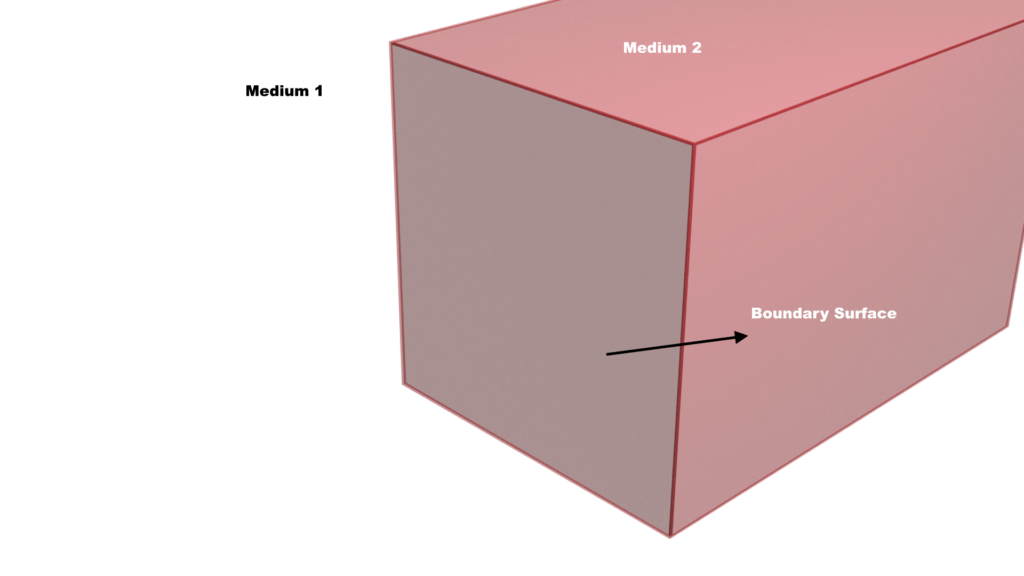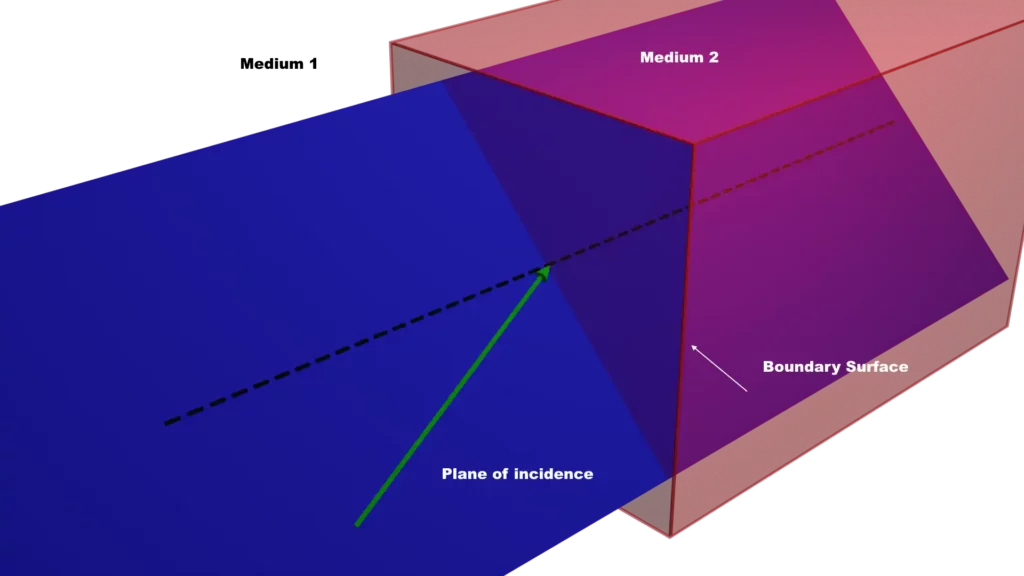Plane of Incidence is a familiar concept while studying EM wave propagation. You must have heard it several times while studying the propagation of EM waves across the interface between two media. Perpendicular Polarization and Parallel Polarization, the two cases while studying oblique incidence, also need a proper understanding of the plane of incidence. So, let’s see what is the plane of incidence in 3D view.
When do we hear the Plane of Incidence?
Number of times.
While studying the EM wave propagation from one medium to other, then this term becomes very important.
Also while studying EM wave propagation in oblique incidence, we have 2 cases viz. Perpendicular and Parallel Polarization.
These polarizations are also based on the nature of E with respect to plane of incidence.
So, lets see.
You can watch the quick video below or read along.
Plane of Incidence
Consider two media separated as shown in figure below. The separation is called as boundary surface.

The perpendicular line drawn to this boundary surface is known as normal.
Now, let us assume that wave is coming from medium 1 and trying to hit the boundary surface. The incident wave as shown in figure.

Now as you can see, the blue plane contains two things
- Incident Wave
- Normal to the Boundary Surface
The plane consisting of the Normal to the Boundary Surface and the incident wave is called as plane of incidence.
Now, one more thing! We know that some of the power that gets reflected back is called as reflected EM wave and the power that gets transmitted back is called as transmitted EM wave.
And, both of these waves i.e. Reflected and Transmitted, they both lie on the “Plane of Incidence”.
Why?
Because the EM waves have to satisfy the Boundary Conditions.
So you can say like this:- Plane os incidence is the plane consisting of four things
- Normal to the Boundary Surface
- Incident Wave
- Reflected Wave
- Transmitted Wave
Simple!
Do not forget to check our Awesome GATE courses.


